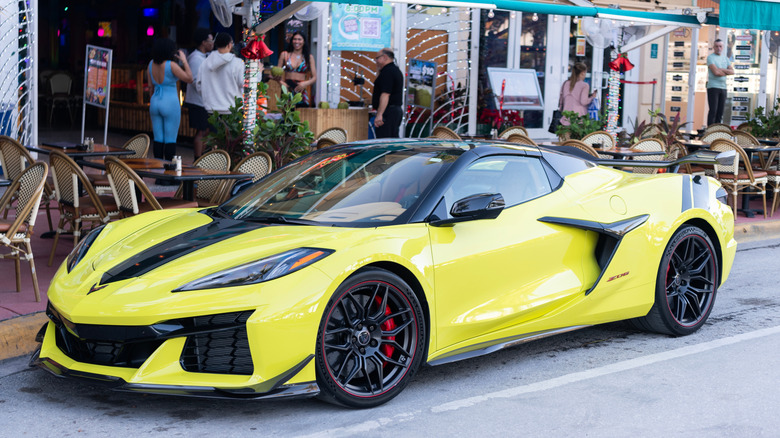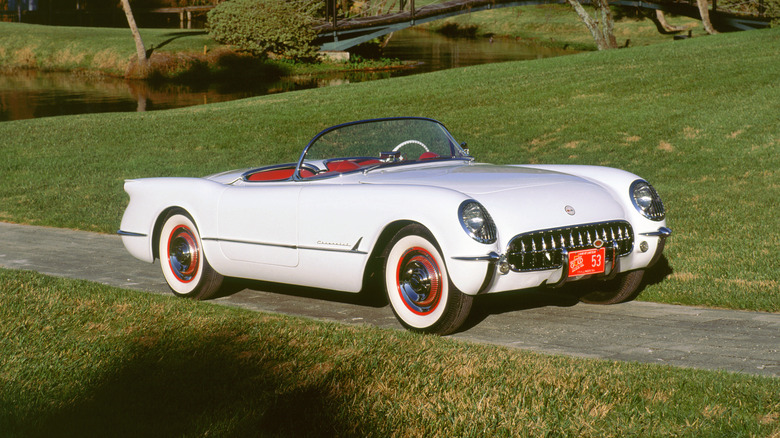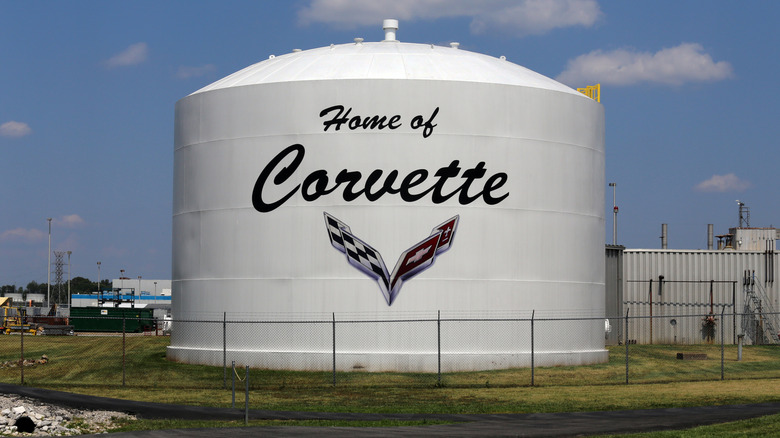Every Place Chevrolet Has Made Corvettes Since 1953
The Chevrolet Corvette has been in continuous production since 1953, making it one of the longest-running nameplates in automotive history. But while the car itself has remained a constant presence on American roads and racetracks, the place where it's built hasn't. In fact, Corvette production has shifted multiple times over the decades, each move tied to changes in technology, demand, or manufacturing needs.
The first Corvettes ever built came out of a small, repurposed area of GM's Flint, Michigan assembly plant. Production started on June 30, 1953, just months after the Corvette's debut at GM's Motorama show in New York. Only 300 units of the C1 Corvette were made here, all by hand, and every single one was painted Polo White with a red interior. This short-run operation wasn't meant to be permanent, it was a proof of concept to test the market.
Flint's Corvette operation was low-volume and labor-intensive. It was the first mass-produced fiberglass car, and GM had to figure out how to work with it at scale. But despite the buzz, sales weren't great to start with. It wasn't until the V8 engine arrived in 1955 that the Corvette became something more than a curiosity. Flint gave the Corvette its start, but it couldn't support full-scale production. By the end of 1953, Chevy had already set its sights on a bigger facility to keep up with the Corvette's growing ambitions. This led to them shifting base, first to St. Louis, and then eventually to Bowling Green, Kentucky.
St. Louis, Missouri was the Corvette's first real home
Chevrolet moved Corvette production to St. Louis, Missouri, at the end of 1953. This marked the first real commitment to building the Corvette as a long-term product. For nearly three decades, from the early C1 through the entire run of the C2 and C3, every single Corvette came out of St. Louis. In early 1977, the plant celebrated a major milestone when the 500,000th Corvette was built.
The St. Louis plant was where the Corvette matured. It's where the Corvette Sting Ray was born, the big-block V8s came to life, and design began to lean more toward performance than just looks. But by the 1980s, the plant was aging and becoming less efficient, with tough working conditions due to its glass roof and lack of air-conditioning. So, in 1981, the Corvette's run in St. Louis came to an end, but not before the facility had pumped out hundreds of thousands of America's sports cars, solidifying its place in U.S. automotive history.
Bowling Green, Kentucky: Corvette's long-term base
In 1979, GM announced that it would take over an old Chrysler air-conditioning unit plant in Bowling Green, Kentucky, and convert it into a Corvette factory — and the company's never looked back. Corvette production in Bowling Green began in mid-1981, and the Kentucky facility has been the Corvette's exclusive home from the C3's final year to the current mid-engined C8. All modern variants, including high-performance trims like the ZR1 (one of the best-looking Corvettes ever designed by Chevrolet), Z06, and Grand Sport, have also rolled out of this facility.
Bowling Green isn't just a production site, it's also the face of the brand. The National Corvette Museum sits right next door, and customers can even opt to pick up their Corvettes at the Museum via GM's R8C Museum Delivery program. The Bowling Green plant itself has been upgraded multiple times, including a major revamp in the late 2010s to support C8 production. That included a new paint shop and specialized tooling for mid-engine layouts. Bowling Green is also where the upcoming C9 will take shape, although the details are secret for now. If you're looking for the heart of the Corvette brand today, it's not in Flint or St. Louis. It's right here in Kentucky.


